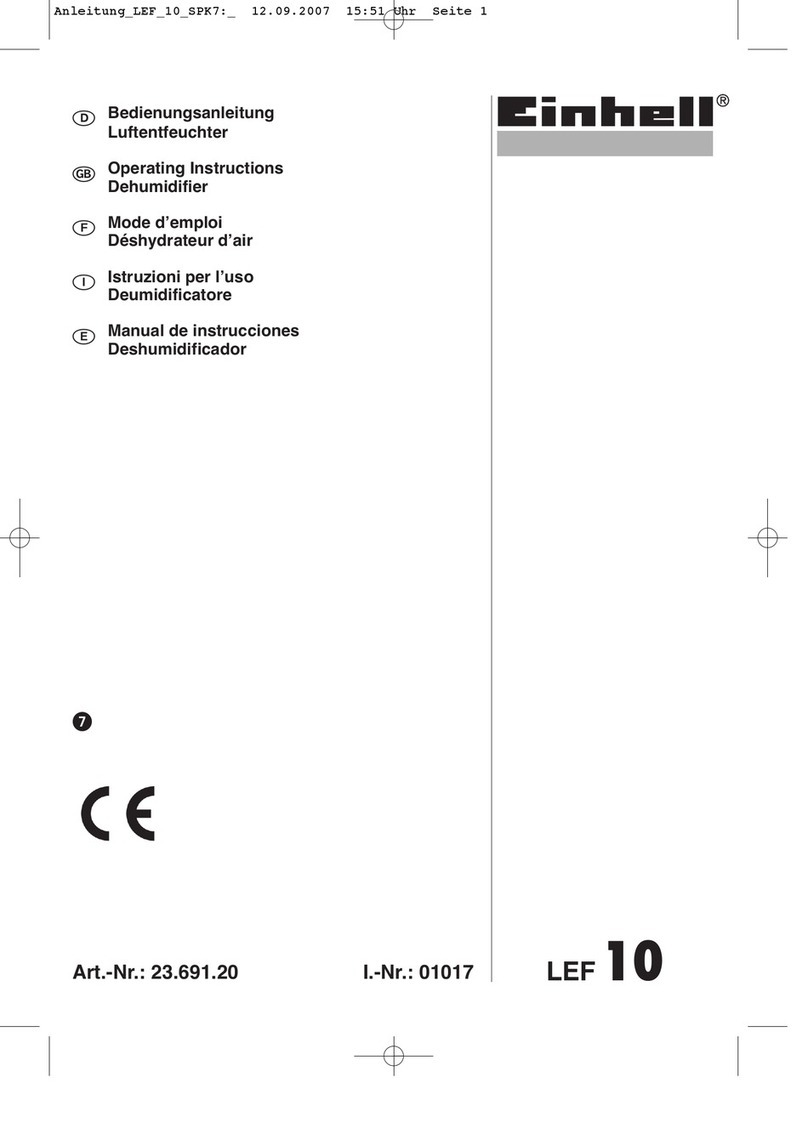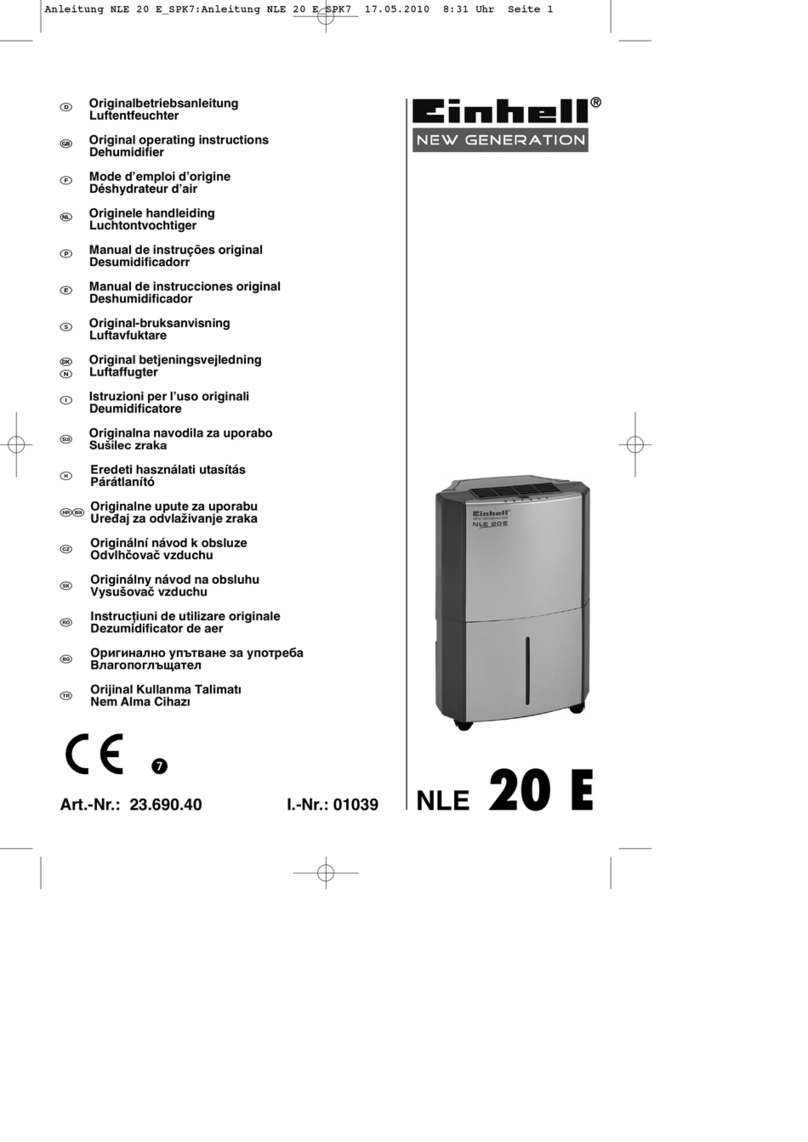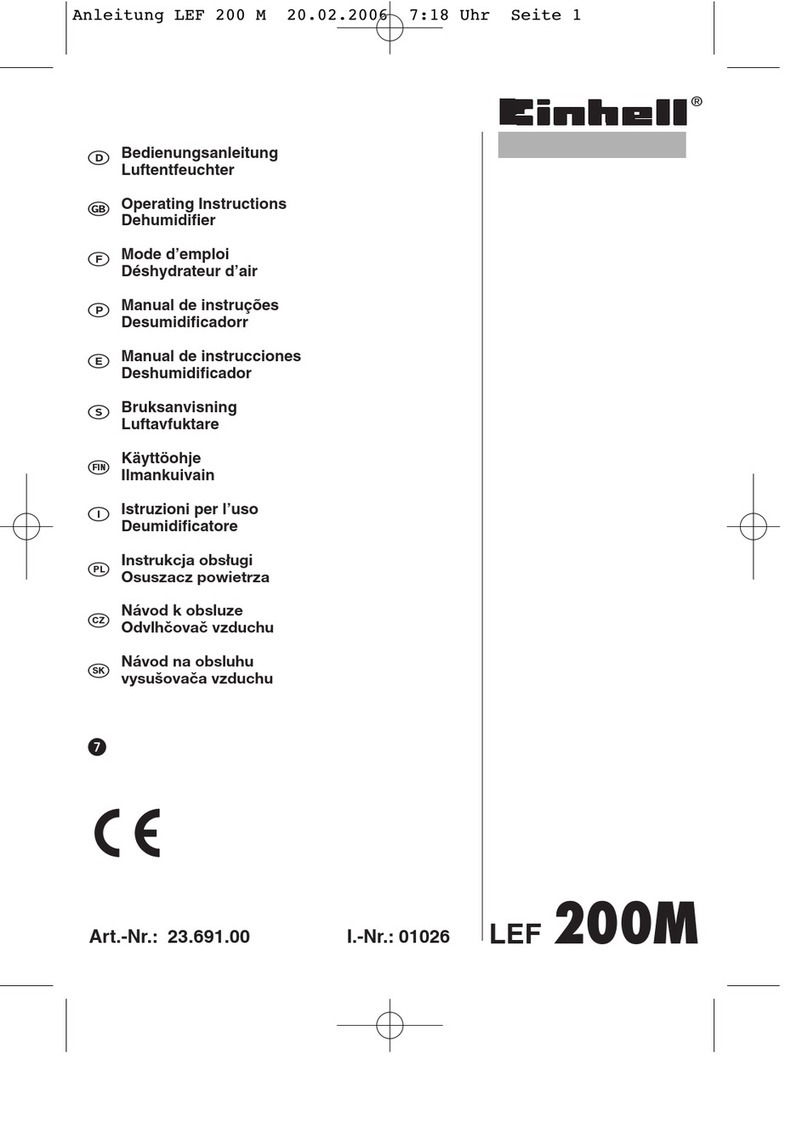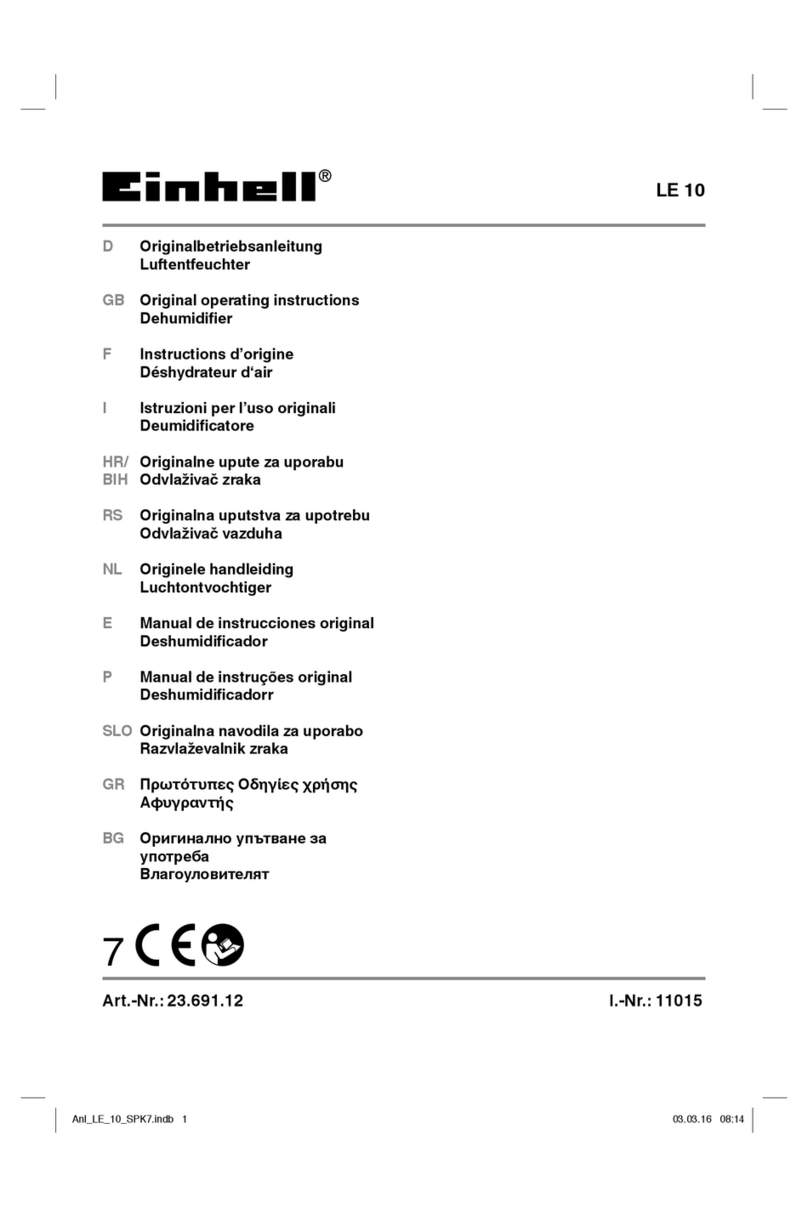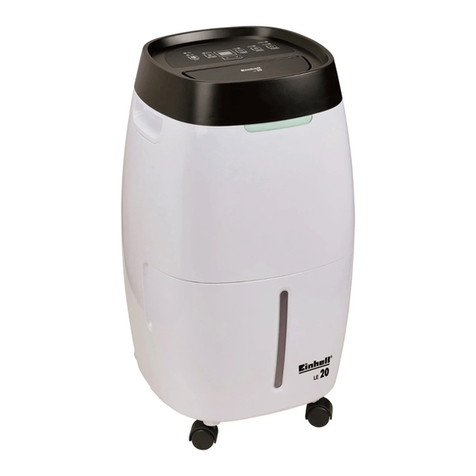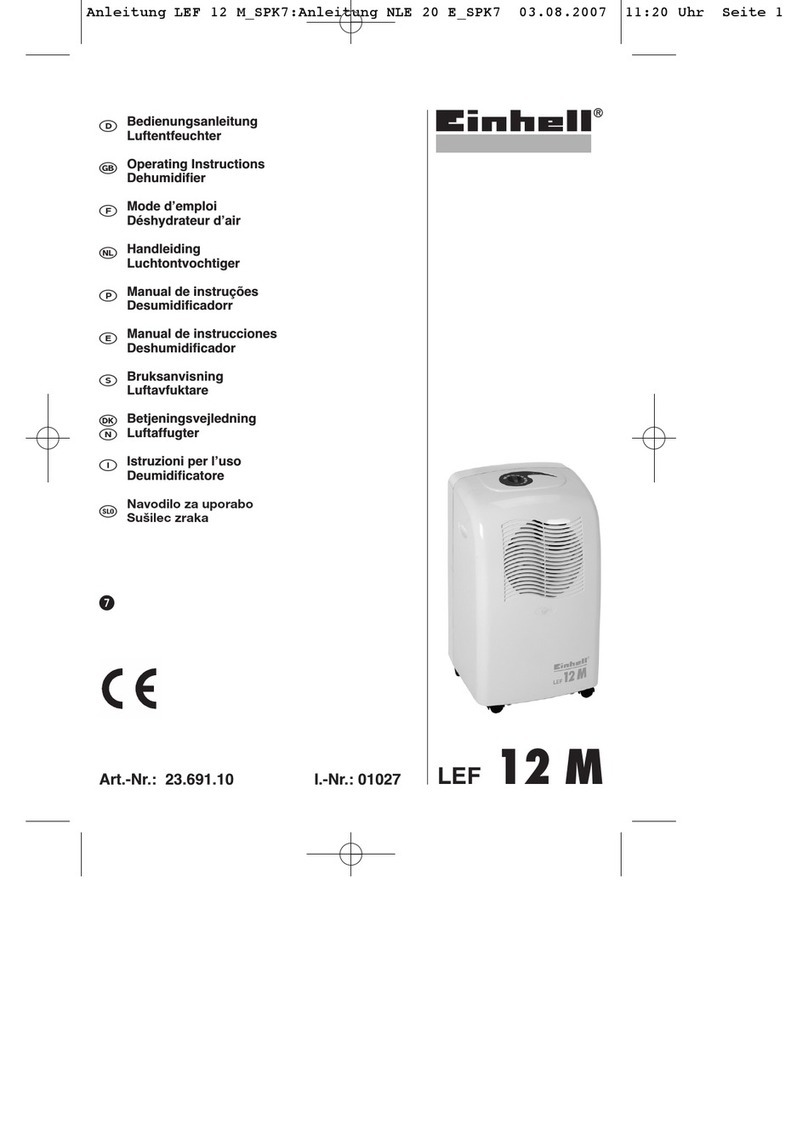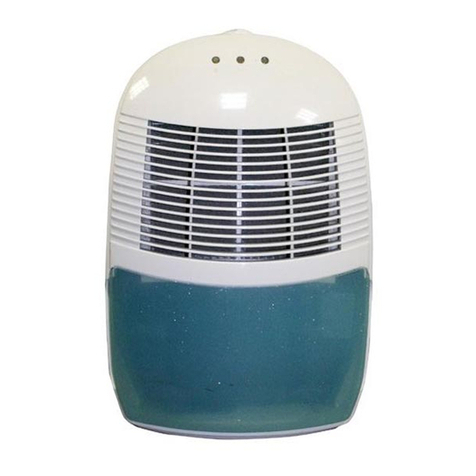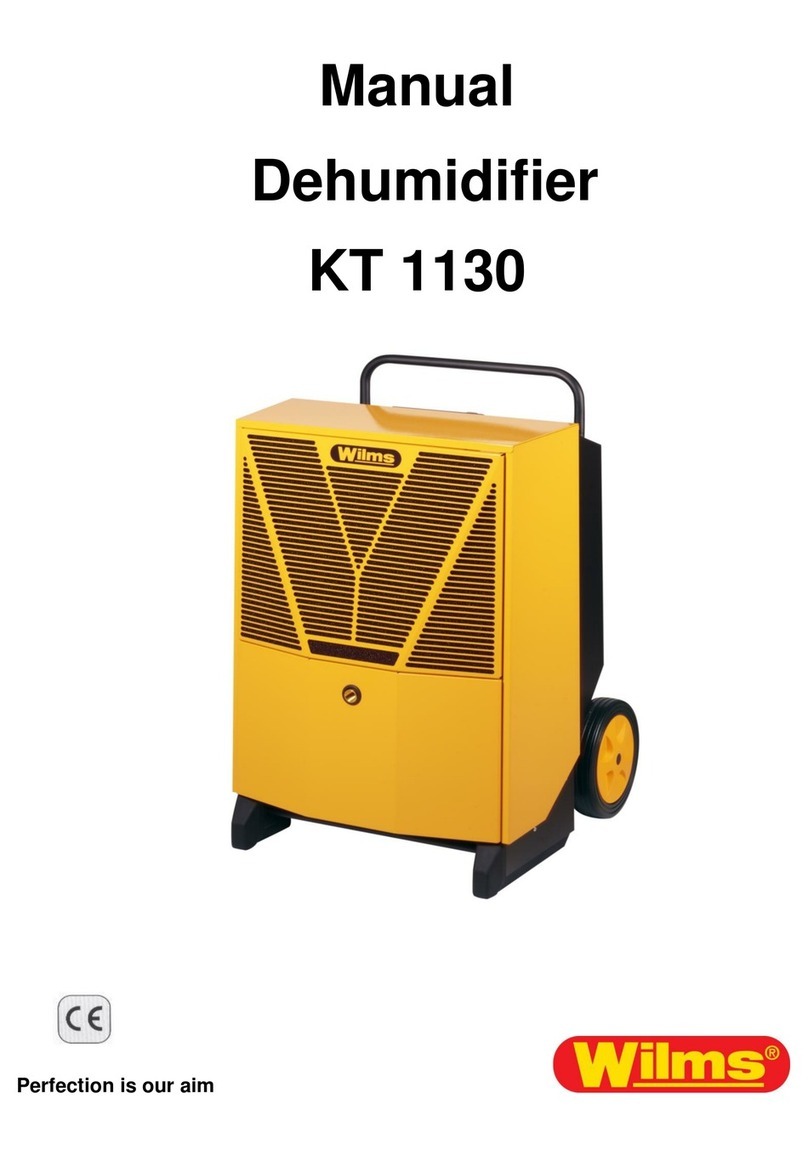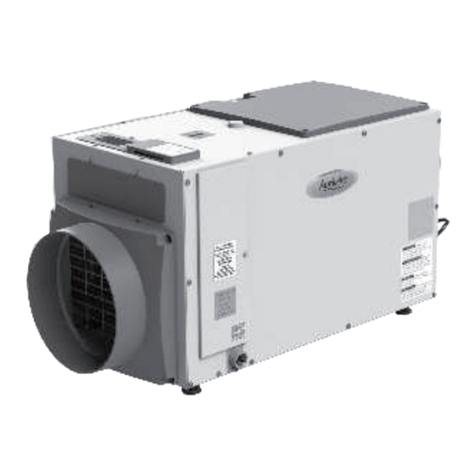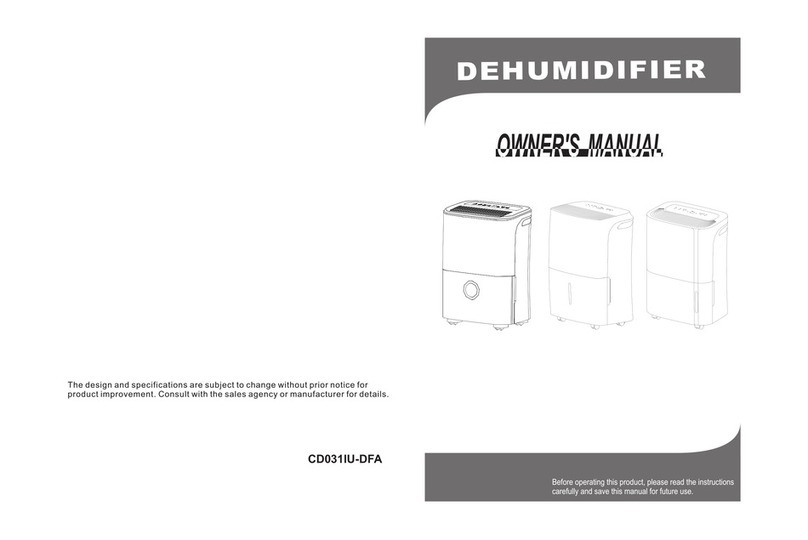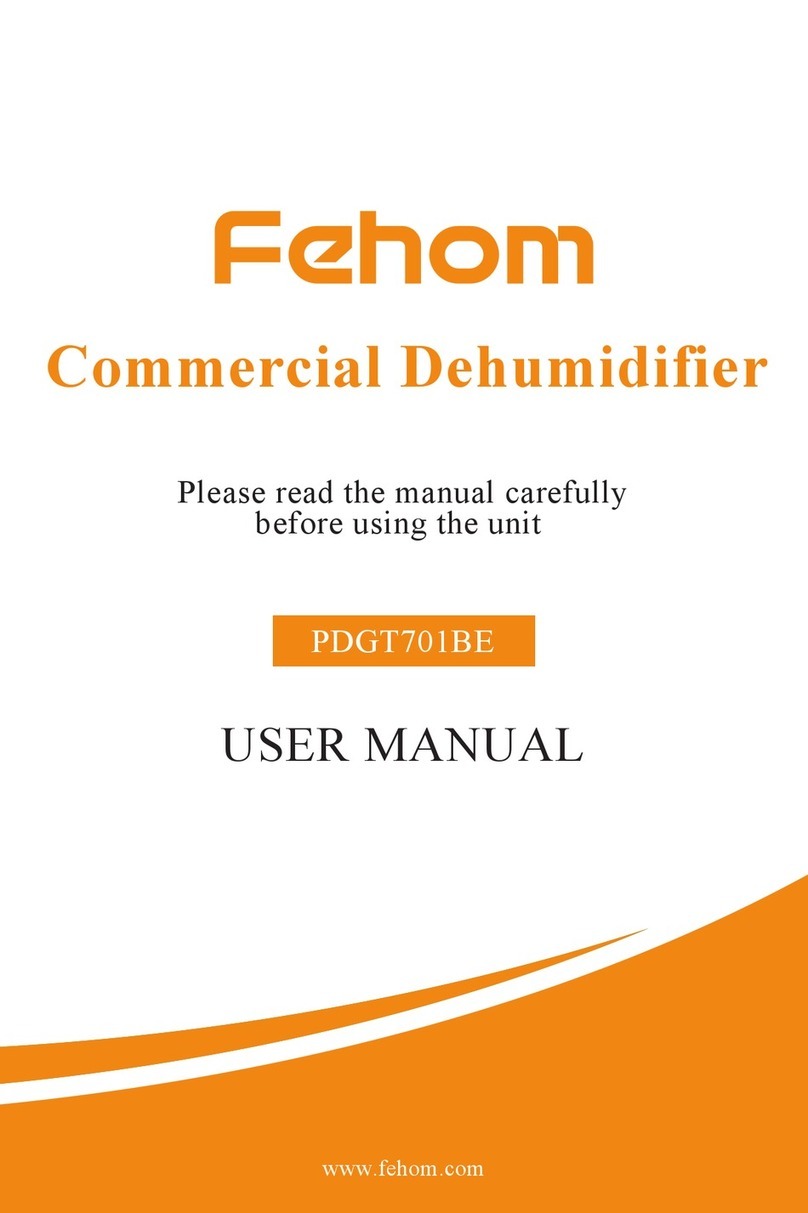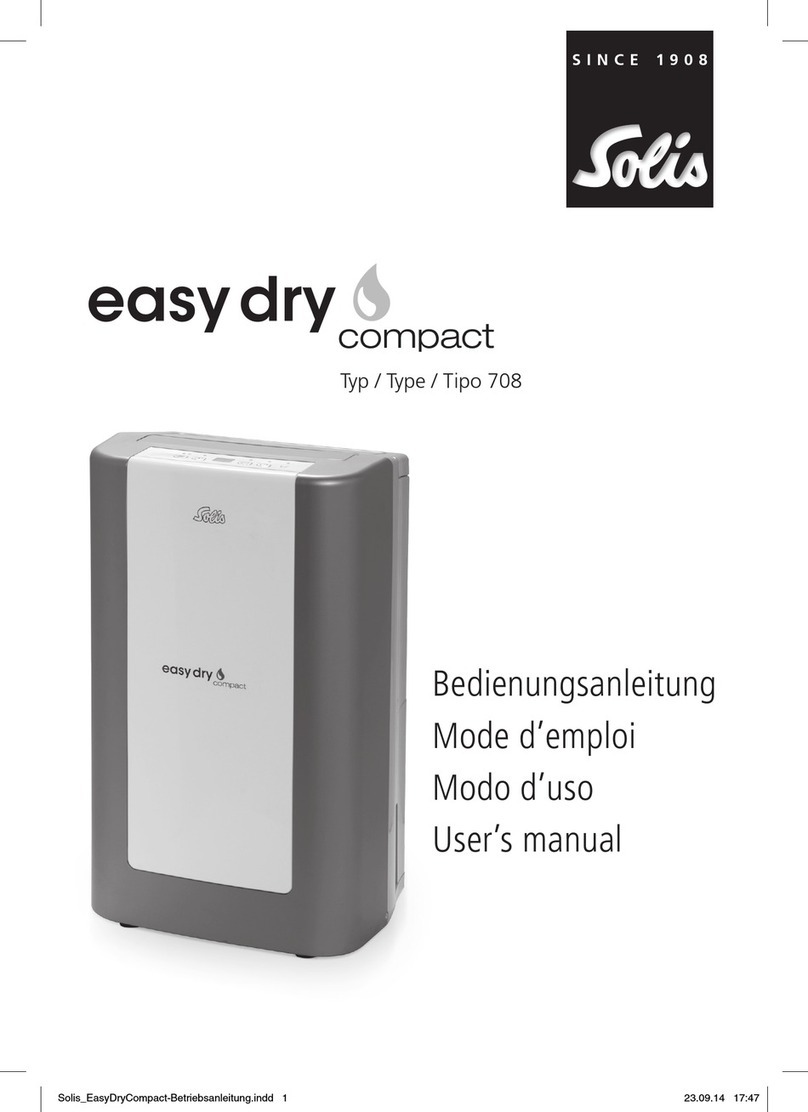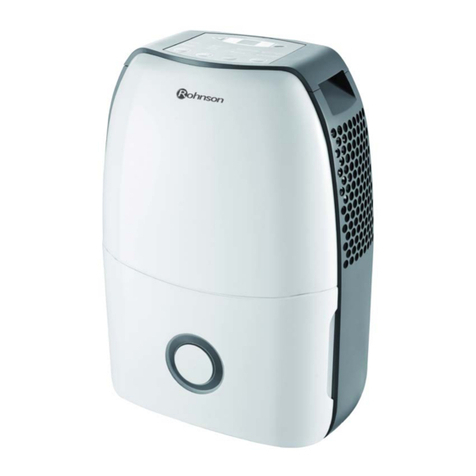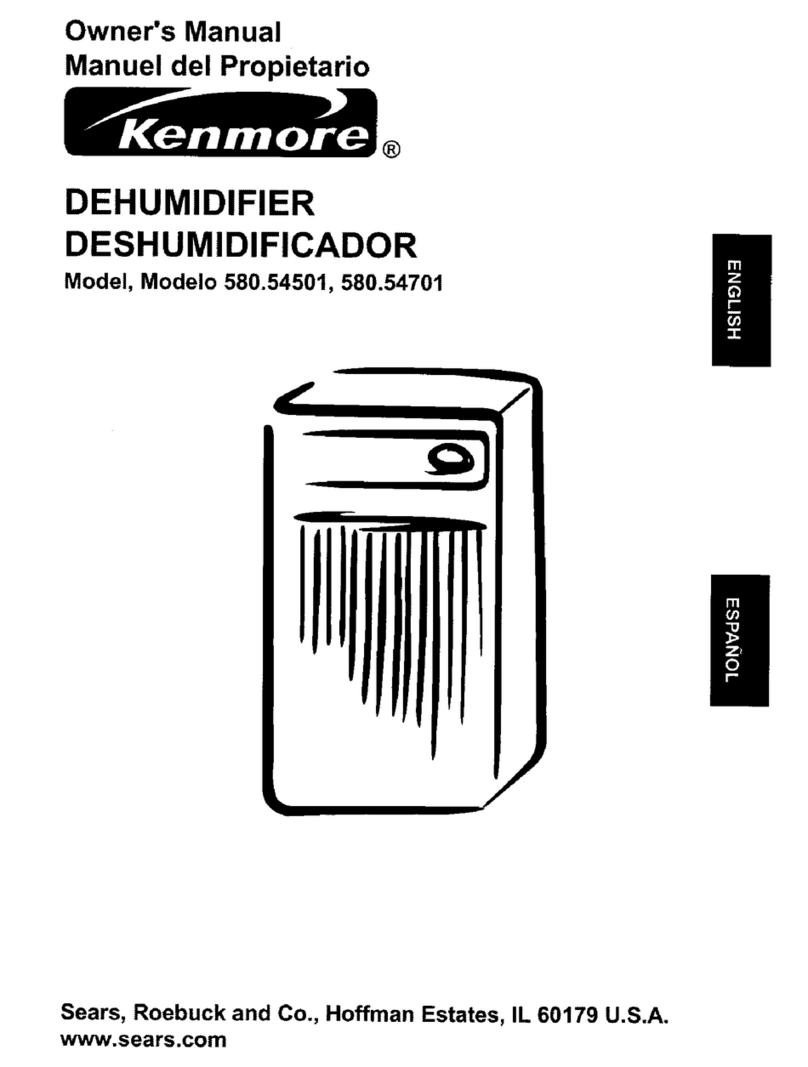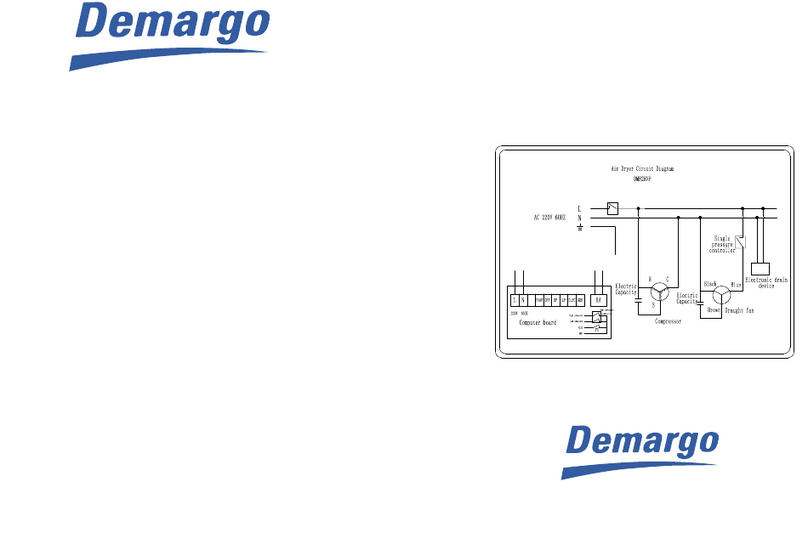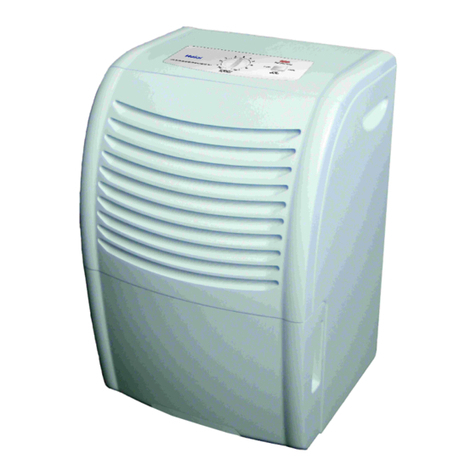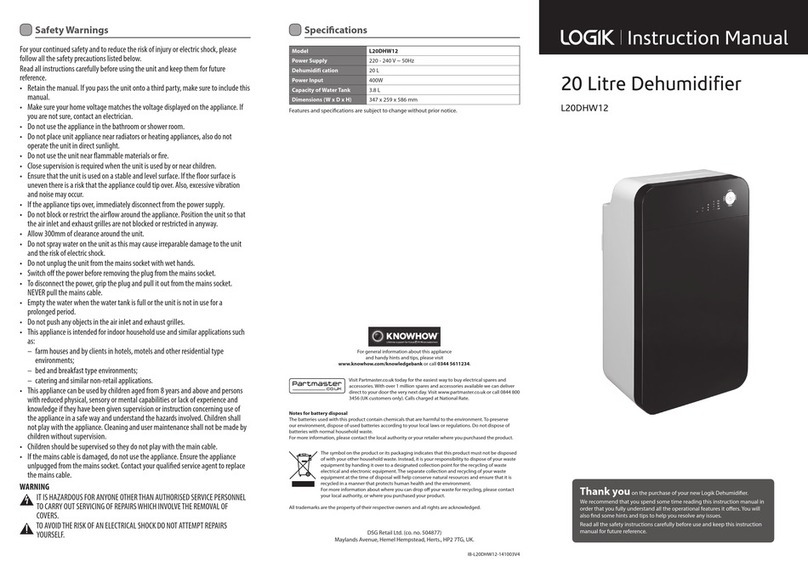5
D
Achtung!
Beim Benutzen von Geräten müssen einige
Sicherheitsvorkehrungen eingehalten werden, um
Verletzungen und Schäden zu verhindern. Lesen Sie
diese Bedienungsanleitung / Sicherheitshinweise
deshalb sorgfältig durch. Bewahren Sie diese gut auf,
damit Ihnen die Informationen jederzeit zur Verfügung
stehen. Falls Sie das Gerät an andere Personen
übergeben sollten, händigen Sie diese
Bedienungsanleitung / Sicherheitshinweise bitte mit
aus. Wir übernehmen keine Haftung für Unfälle oder
Schäden, die durch Nichtbeachten dieser Anleitung
und den Sicherheitshinweisen entstehen.
1. Sicherheitshinweise
Das Entfeuchtungsgerät muss immer in
senkrechter Position sein.
Nach Transport oder Neigung (Schrägstellen) das
Gerät mindestens 1 Stunde nicht an die
Steckdose anschließen.
Mindestabstände von 50 cm zu Gegenständen
nach vorne und hinten sind einzuhalten.
Gerätefront und Geräterückseite dürfen nicht
abgedeckt werden.
Halten Sie alle Fremdkörper von der Lufteintritts-
und Luftaustrittsöffnung fern.
Stellen Sie das Gerät entfernt von Heizgeräten
oder Wärme erzeugenden Geräten auf.
Gießen oder sprühen Sie niemals Wasser über
das Gerät.
Verwenden Sie niemals den Netzstecker, um das
Gerät ein- oder auszuschalten.
Benützen Sie immer den Schalter am Bedienfeld.
Bevor Sie das Gerät verschieben, schalten Sie es
am Aus/Ein-Schalter ab, ziehen dann den
Netzstecker und leeren den Kondensatbehälter.
Reinigen Sie den Luftfilter, bevor er stark
verschmutzt ist. Das Gerät arbeitet am besten,
wenn der Filter sauber ist.
Verwenden Sie keine Sprühmittel oder andere
brennbare Reinigungsmittel am Gerät.
Bei Störungen am Gerät schalten Sie es ab,
ziehen den Netzstecker und verständigen Ihren
Kundendienst.
Wenn das Netzkabel beschädigt wurde, muss es
durch den Hersteller oder seinem Kundendienst
oder einer ähnlich qualifizierten Person ersetzt
werden, um Gefährdungen zu vermeiden.
Verwendete Leitungsverlängerungen müssen
mindestens einen Querschnitt von 1,0 mm2
aufweisen.
Dieses Gerät ist nicht dafür bestimmt, durch
Personen (einschließlich Kinder) mit
eingeschränkten physischen, sensorischen oder
geistigen Fähigkeiten oder mangels Erfahrung
und/oder mangels Wissen benutzt zu werden, es
sei denn, sie werden durch eine für ihre Sicherheit
zuständige Person beaufsichtigt oder erhielten
von ihr Anweisungen, wie das Gerät zu benutzen
ist. Kinder sollten beaufsichtigt werden, um
sicherzustellen, dass sie nicht mit dem Gerät
spielen.
WARNUNG
Lesen Sie alle Sicherheitshinweise und
Anweisungen. Versäumnisse bei der Einhaltung der
Sicherheitshinweise und Anweisungen können
elektrischen Schlag, Brand und/oder schwere
Verletzungen verursachen zur Folge haben.
Bewahren Sie alle Sicherheitshinweise und
Anweisungen für die Zukunft auf.
2. Gerätebeschreibung (Abb. 1)
1. LED „Gerät ein“
2. Ein- Ausschalter
3. LED „Kondensatbehälter voll“
4. Ventilator
5. Kondensatbehälter
6. Sichtfenster
7. Gummifuß
8. Luftfilter
9. Netzleitung
3. Bestimmungsgemäße Verwendung
Der Luftentfeuchter ist nur zur Entfeuchtung von privat
genutzten Räumen (z.B. für Wohn-, Schlaf-, Lager-
oder Kellerräume) bestimmt.
65% Luftfeuchte ist die Obergrenze für den
Menschen, um sich noch wohl zu fühlen. Wenn es
dem Menschen zu warm ist, ist der Wassergehalt zu
hoch, in anderen Worten die Luftfeuchte ist zu hoch.
Luftfeuchte hat eine bestimmte Relation zur
Temperatur. Generell gelten für das Wohlbefinden
35 – 65% relative Luftfeuchte bei 21°C als ideal.
Die Maschine darf nur nach ihrer Bestimmung
verwendet werden. Jede weitere
darüberhinausgehende Verwendung ist nicht
bestimmungsgemäß. Für daraus hervorgerufene
Schäden oder Verletzungen aller Art haftet der
Benutzer/Bediener und nicht der Hersteller.
